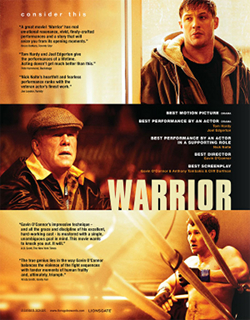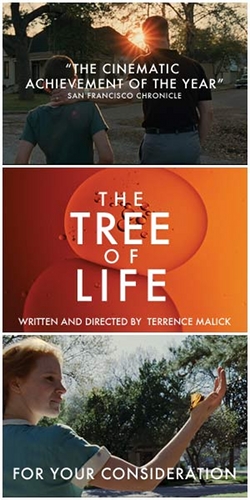Review: Take Shelter (2011)
Jeff Nichols’ remarkable 2008 film Shotgun Stories was a quiet parable about rage, violence, and familial conflicts that established its star, Michael Shannon, as one of the finest American actors working today. Nichols and Shannon re-team for Take Shelter, an intense new film that stars Shannon as an Ohio family man named Curtis LaForche whose stable life is threatened when he begins to receive terrifying visions of a massive storm, in which the rain is a poisonous substance resembling motor oil, that seems to make humans and other animals turn violent. After a dream where his beloved dog almost chews through his arm, Curtis decides to pen the dog up outside, foreshadowing what will later become full blown paranoia on Curtis’ part.
Curtis has a loving wife, played by Jessica Chastain, and together they care for their hearing impaired daughter, who is in need of cochlear implants. When Curtis’ visions inspire him to begin renovating their tornado shelter, a significant emotional and monetary strain is put on the family. His obsession with the storm shelter forces him to secretly take out an exorbitant home improvement loan, borrow equipment from his construction job without asking his boss – which eventually gets him fired - and stocking the storm shelter with canned goods and even installing a toilet. Curtis begins to hear peals of thunder in the middle of a clear day, and flocks of starlings behave erratically, flying in bizarre patterns across the sky. Curtis begins to suspect that his problems could be rooted in mental illness, so he buys a book on the subject, pays a visit to his schizophrenic mother (played with grace and delicacy by Kathy Baker), and begins to see an inadequate talk therapist at the local free clinic. The co pay for a few days prescription of a mild sedative is exorbitant. Each twist of the knife puts further strain on Curtis’ family, and the question of whether the coming storm is real or exists only in Curtis’ damaged mind, or if those big, roiling clouds will actually begin to spew poison rain becomes far less clear. The film handles this deftly with a scene near the end of the movie where the family actually has good cause to enter Curtis’ storm shelter, but it would be cheating to reveal where it goes from there.
One of the films strengths is the way that it refuses to patronize its working class characters, never making them into stereotypes. Their economic troubles, far from a cheap plot device used to give the film a thin veneer of context, simply depict the reality of their economic standing, and how the complications brought on by the pharmaceutical and banking industries would effect a family dealing with someone with issues that are similar to Curtis’. In addition to a gift for effective storytelling and a deep understanding of life for blue-collar American families, Nichols is adept at working with actors. Here, as always, Michael Shannon towers over the rest with a quiet, burning intensity that does not overwhelm the fact that he is essentially a good man, trying to do right by his family. Jessica Chastain continues her incredible streak, in one of her seven starring roles of 2011, giving an incredible performance as Curtis’ loving wife who struggles to understand him, and keep their family strong in the face of whatever storm (literal or otherwise) that they have to weather. Nichols ratchets up the tension to a point that’s almost unbearable, as the anxiety of the LaForche family becomes our own, and with its masterful final shot, Take Shelter cements itself as one of the year’s best films.















 Review: Back to Stay (2011)
Review: Back to Stay (2011) Review: The Players vs Angeles Caidos (1969)
Review: The Players vs Angeles Caidos (1969)




